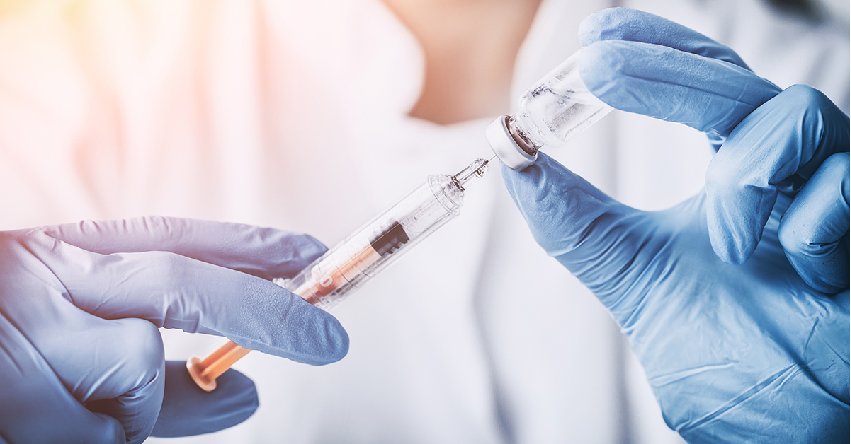
11 Sep Five methods of how to prevent cervical cancer
In Peru, cervical cancer is the leading cause of neoplastic death in women. In the country, 4,600 new cases of this disease are registered each year, and 1,700 women lose the battle annually. Is there any way to prevent cervical cancer? Here we tell you.
The problem lies in the little commitment that society has to their health and the fact that. Although it sounds hard to believe, going to a gynecologist is still a taboo subject in many families. That is why we want to help you with 5 cervical cancer prevention recommendations.
Cervical Cancer: Causes and Prevention

How to prevent cervical cancer? Is this possible? Prevention of cervical cancer can be achieved through early detection of cellular abnormalities in your body and, to a lesser extent, but not least, by leading a healthy lifestyle.
For this reason, it is recommended that you carry out the following tests from the beginning of your sexual life, since this type of cancer, for the most part, is transmitted through sexual relations.
Lifestyle And Sexual Habits
Leading a healthy lifestyle helps prevent cervical cancer. Keep in mind that tobacco use is a risk factor for the onset of cervical cancer, so if you are one of the people who smoke, it is better that you get away from that bad habit.
On the other hand, sexual promiscuity contributes to the spread of the Human Papilloma Virus (HPV), which is responsible, in most cases, for this type of cancer. In addition, the indiscriminate use of oral contraceptives makes your body more vulnerable to contracting this disease.
Papanicolaou (PAP)
It is the best-known method of preventing cervical cancer, simple and painless. You should have it done once a year starting at age 21. This test consists of collecting samples of cells from the cervix or cervical canal so that they can be studied in the laboratory.
The doctor will insert a lubricated speculum into your vagina, this will allow the vaginal walls to be opened so that the doctor can remove a sample of cervical mucosa with a cytobrush and thus determine if there is any cellular alteration.
Before taking this test, you should take into account the following:
- Do not have sexual intercourse 24 hours prior to performing the test.
- Not be with menstruation.
- Do not apply vaginal douches or medications 48 hours before the test, as they could alter the results.
Inspection of Acetic Acid (VAT)
This type of exam can be done from the age of 30 and it is a test that can be seen with the naked eye. VIA helps to identify the disease early.
It consists of washing the cervix with a diluted solution of acetic acid for one minute. If the test is positive, the tissue with pre-cancerous lesions will stain white. VAT is a simple test that does not require laboratories and the result is instant.
HPV Test
This type of test can also be done from the age of 30 and consists of detecting the DNA of the HPV type considered high risk, that is if this infection is risky for you.
To do this, you must obtain a sample of cells from your cervix or vagina, the sampling procedure is the same as that of the Pap smear. The difference between the two lies in the fact that while the Pap smear detects changes or abnormalities in the cells, the HPV Test only detects the presence of Human Papilloma.
Many times these tests are performed together to obtain greater precision in the results, but according to the American Cancer Society, these two tests should not be performed together if you are under 30; if after the Pap smear there is any abnormality, the HPV Test will be necessary.
What causes cervical cancer?
Most cases of cervical cancer are caused by the human papillomavirus (HPV). This is a common virus that can be spread from one person to another during sex. Most people get it at some point in their lives. HPV usually doesn’t cause symptoms, so you may not know you have it.
There are different types of HPV that
produces different effects. For most women, HPV goes away on its own. However, if not, there is a chance it could eventually cause cervical cancer. And other types can cause genital or skin warts.
In addition to the virus, there are other factors to consider for cervical cancer prevention, such as your environment or your lifestyle choices, as these also determine whether you will develop cervical cancer. Some risk factors that increase the chances of developing this type of cancer are the following:
- Having HIV (the virus that causes AIDS) or another condition that makes it hard for your body to fight health problems.
An immune system that is weakened by another health condition is more likely to develop cervical cancer.
- being a smoker
Smoking is associated with squamous cell cervical cancer.
- Having multiple sexual partners.
The greater your number of sexual partners, the greater the number of sexual partners of your partner. The greater your chance of contracting HPV.
There are other risk factors such as the use of birth control pills for a long period (five years or more) and having given birth to three or more children.
One study found that women whose blood tests showed high levels of chemicals that indicate a diet rich in fruits and vegetables were able to clear their HPV infections faster than their peers. This could help reduce the risk of cancer. Adding a variety of colors to your diet and including nutritious foods with cervical cancer-fighting attributes is recommended for all three meals of the day: breakfast, lunch, and dinner.
For the first meal of the day, breakfast, you can have orange juice, accompanied by melon, yogurt, and granola. At lunch, you can add red bell peppers, carrots, mushrooms, and/or zucchini to your meals. Finally, at dinner, you can try salads that have a rich mix of vegetables.
You may like to read 10 precautions you must have during pregnancy


Sorry, the comment form is closed at this time.